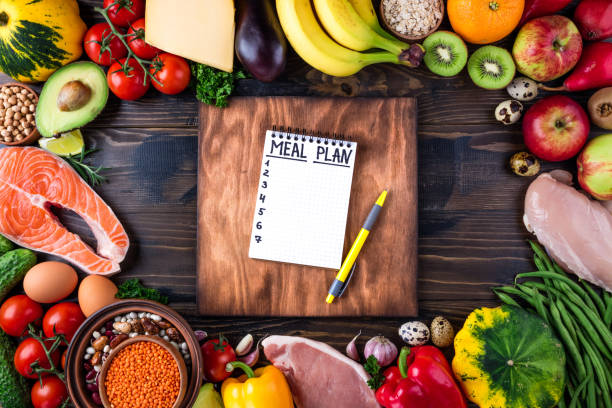Affordable Healthy Eating in 2025: A Practical Guide to Nutritious Living on a Budget
In a world where food prices are rising and health concerns are growing, affordable healthy eating has become more than a trend it’s a necessity. Whether you’re a student, a parent, or a busy professional, eating well without overspending is entirely possible with the right strategies.
This comprehensive guide will walk you through the principles, tools, and real-life tactics to help you eat nutritiously while staying within your budget in 2025.
Why Affordable Healthy Eating Matters More Than Ever
The cost of living has surged globally, and food inflation continues to impact households. According to recent data, 60% of consumers say they would eat healthier if nutritious foods weren’t so expensive. Yet, with smart planning and a bit of creativity, healthy eating can be both budget-friendly and sustainable.
Key Drivers in 2025:
- Rising food costs due to global supply chain shifts and climate change
- Increased health awareness post-pandemic
- Greater access to digital tools for meal planning and budgeting
- Growing demand for plant-based and whole foods
The Core Principles of Affordable Healthy Eating
To eat healthy on a budget, focus on these foundational principles:
- Prioritize Whole Foods Choose unprocessed or minimally processed items like grains, legumes, fruits, and vegetables.
- Plan Ahead Meal planning reduces waste and impulse purchases.
- Buy in Bulk Staples like rice, oats, and beans are cheaper when bought in larger quantities.
- Cook at Home Home-cooked meals are significantly cheaper and healthier than takeout.
- Embrace Flexibility Use what’s in season or on sale to guide your meals.
Budget-Friendly Superfoods to Stock in 2025
Here are nutrient-dense, low-cost foods that should be on every grocery list:
- Lentils and beans (protein, fiber, iron)
- Brown rice and oats (complex carbs, B vitamins)
- Frozen vegetables (just as nutritious as fresh, longer shelf life)
- Canned tuna or sardines (omega-3s, protein)
- Eggs (versatile, affordable protein)
- Sweet potatoes (fiber, vitamin A)
- Bananas and apples (budget-friendly fruits)
- Peanut butter (healthy fats, protein)
Real-World Example: The $50 Weekly Meal Plan
Case Study: Jamal, a college student in Karachi
Jamal uses a simple strategy to eat healthy on a tight budget:
- Breakfast: Overnight oats with banana and peanut butter
- Lunch: Lentil curry with brown rice
- Dinner: Stir-fried frozen veggies with eggs and whole wheat roti
- Snacks: Boiled eggs, fruit, or homemade popcorn
By shopping at local markets and buying in bulk, Jamal spends just PKR 7,500 (~$50) per month on groceries while meeting his nutritional needs.
2025 Trends & Statistics
- $26.1 billion: Projected global spending on health food in 2025
- 69% of Americans say rising food prices make it harder to eat healthy
- 90% of adults believe healthy food has become more expensive
- Frozen and canned produce sales are up 18% as consumers seek affordable options
Expert Tips for Eating Healthy on a Budget
> “Healthy eating doesn’t require exotic ingredients or expensive superfoods. It’s about consistency, balance, and smart choices.” > — Maya Feller, MS, RD, CDN
More Pro Tips:
- Shop with a list to avoid impulse buys.
- Use unit pricing to compare value.
- Cook in batches and freeze leftovers.
- Repurpose ingredients (e.g., roasted veggies → soup → wraps).
- Avoid pre-packaged snacks make your own trail mix or granola bars.
Smart Shopping Strategies
1. Shop Seasonally
Seasonal produce is cheaper and fresher. Use local farmer’s markets or community-supported agriculture (CSA) boxes.
2. Embrace Store Brands
Generic or store-brand items often have the same quality as name brands at a lower price.
3. Use Cashback & Discount Apps
Apps like Ibotta, Rakuten, or Fetch Rewards offer rebates on healthy groceries.
4. Buy Frozen or Canned
Frozen fruits and veggies are picked at peak ripeness and retain nutrients. Canned beans and tomatoes are pantry staples.
Meal Prep Hacks for Busy People
- Prep once, eat all week: Cook grains, proteins, and veggies in bulk.
- Use one-pot recipes: Save time and reduce cleanup.
- Invest in reusable containers: Portion meals for grab-and-go convenience.
- Theme your meals: Taco Tuesday, Stir-Fry Friday, etc., to simplify planning.
Common Myths About Healthy Eating
| Myth | Reality |
|---|---|
| Healthy food is expensive | Not if you plan and shop smart |
| You need organic everything | Focus on whole foods first |
| Fresh is always better | Frozen and canned are nutritious too |
| Eating healthy is time-consuming | Meal prep saves time in the long run |
Conclusion: Eating Well Without Breaking the Bank
Affordable healthy eating is not only possible it’s empowering. With the right mindset, tools, and strategies, you can nourish your body, support your goals, and stay within budget. In 2025, the key is to simplify, plan, and prioritize what truly matters: your health and well-being.
Frequently Asked Questions (FAQ)
1. Can I eat healthy on a tight budget?
Yes! Focus on whole foods, plan meals, and buy in bulk or on sale.
2. Are frozen vegetables as healthy as fresh?
Absolutely. They’re often frozen at peak ripeness and retain nutrients.
3. How can I save money on protein?
Use plant-based proteins like lentils, beans, and eggs. Canned fish is also affordable.
4. What’s the cheapest healthy breakfast?
Oatmeal with fruit or eggs with toast are both nutritious and budget-friendly.
5. How do I avoid food waste?
Plan meals, store food properly, and use leftovers creatively.
6. Is eating out ever affordable and healthy?
Occasionally, yes look for grilled options, skip sugary drinks, and watch portions.
7. What apps can help me eat healthy on a budget?
Try Mealime, Yummly, Paprika, or Prepear for meal planning and grocery lists.
References:
Health Conscious Consumer Statistics (2025)
Keep Going Run: Food and Nutrition Trends for 2025

2 thoughts on “Affordable Healthy Eating”